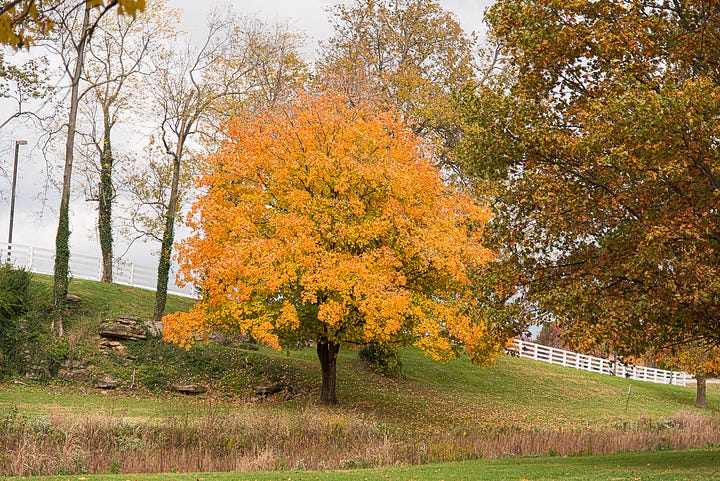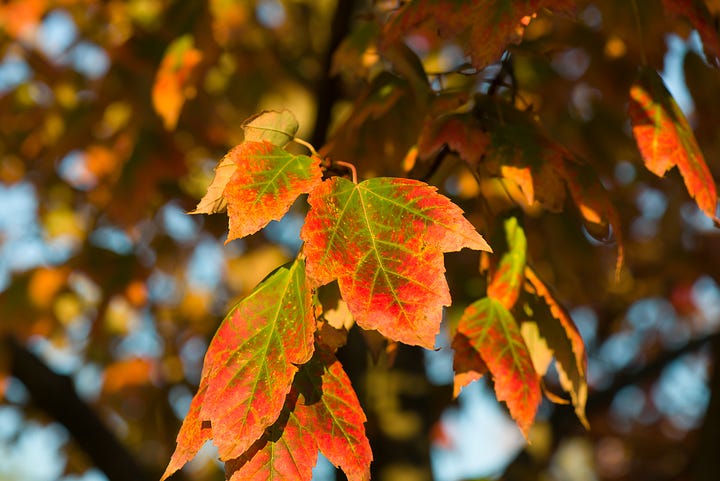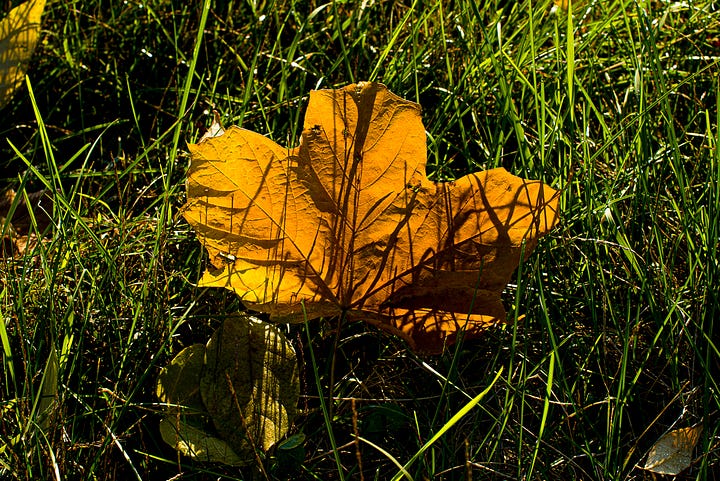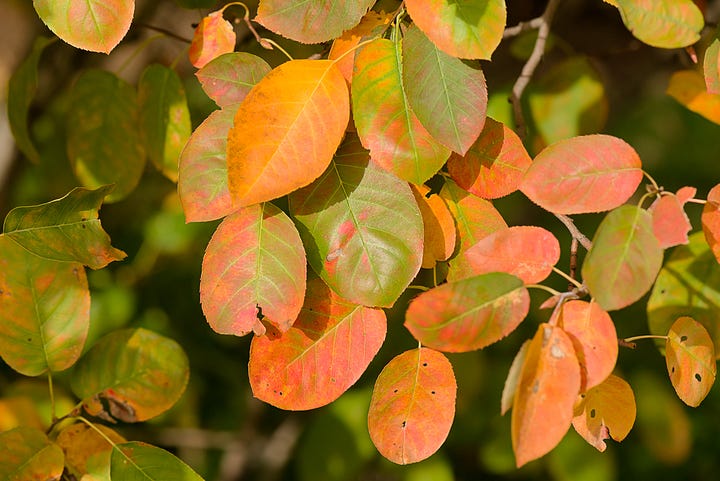For several weeks now, we have been discussing autumn colors and what it means to trees. We did this in advance of peak colors in most places so you would know about it before going out to enjoy the show. Now, let’s plan to go see autumn in person.
There are two ways of celebrating the glory of autumn, the tourist way and the personal way. Autumn color tourism is a $60 billion industry. It is designed to draw you to a place with good colors to drive around, watching colors from the road, spending money on gas, food, and lodging. I previously told the story about how I upset local officials in a rural Kentucky county when I predicted dull colors during a drought; I was threatening their tourism dollars.
There is another way to experience autumn, a way that is more personal and perhaps more meaningful. We’ll come to that, but first I want to tell a personal autumn story.




If you are able, please consider becoming a paid subscriber or give us a tip at Ko-fi. Our ability to bring you these stories depends on your generosity.
I have spent most of my life in the Eastern Deciduous Forest, the vast forest region that occupies much of the eastern half of the continent. It is the region with the greatest diversity and intensity of autumn colors. The experience of autumn has always been a time of great joy to me, a time I explore the colorful woods as much as possible.
For a period of almost five years, though, I lived on the equator in Southeast Asia. I was working on several projects while on assignment from my university in Kentucky. Of all the things I missed the most about home, autumn colors were near the top of the list. But my emotions were soothed when I found a little bit of autumn in a rubber plantation.
Rubber trees are an important tropical crop, grown in plantations for rubber and, increasingly, for wood. There was a small research plantation near my home. One day, I noticed leaves drifting to the ground in the still air. The leaves were brown, not colorful, but the sound and smell of falling rubber leaves became my autumn. Rubber trees are deciduous, losing all their leaves once a year, resting for a bit, then producing new ones. Other trees lose their leaves, because leaves are temporary as we have discussed. But only a few tropical trees lose their leaves all at once.
That was all it took for me. I would ride my bike to a plantation, walk to the middle of the trees, sit down with my back against a tree, and immerse myself in autumn. The sound of leaves drifting down, the smell of drying leaves, the crunch of leaves under foot became my autumn and relieved my longing for home.
This, to me, is the real experience of autumn, the personal experience of being among the trees, of the leaf colors, smells, sounds, of the shuffling of leaves under foot. Looking out a car window does not evoke an emotional connection with trees. For that, we need to be among them. The joy if autumn is then in the details. As the pictures above suggest, every leaf and every tree is different. The details are far more engaging than the broad brush of autumn tourism provided.
So here is my recommendation. Make autumn personal and emotional. Don’t drive to some distant colorscape and spend your money. Instead, find your personal autumn, even if it is a park down the street. And instead of going one weekend, pick a place close to you and wander among its trees over and over, observing the daily changes.
Comments are open to all. What is your favorite way to experience the glory of autumn?

For me, it's as much about autumnal light as it is about fall colors, and that's another reason to get out of your car. You want to stand underneath a tree and admire the sunlight as it's filtered through the red, orange, yellow above you.
When a prompt touches something so resonant that you can't answer it without pages of copy, a dozen watercolor spreads, and audio. Thanks for that.